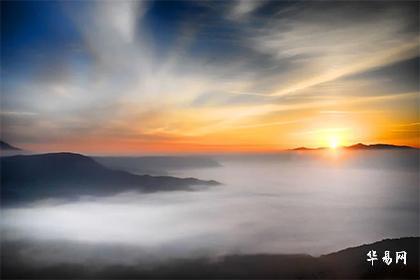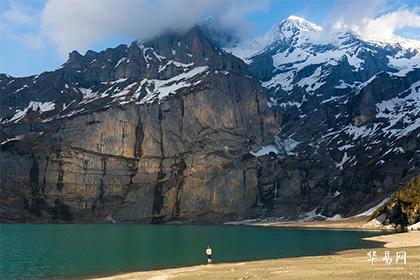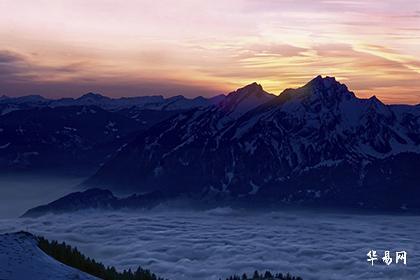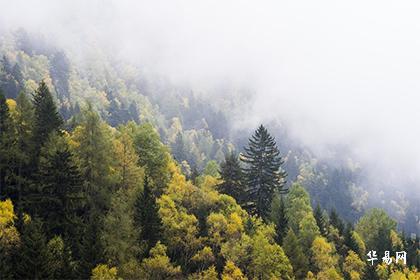Our solar system consists of the sun, nine planets (and their moons), an asteroid belt, and many comets and meteors. The sun is the center of our solar system; the planets, their moons, the asteroids, comets, and other rocks and gas all orbit the sun.
The nine planets that orbit the sun are (in order from the sun): Mercury, Venus, Earth, Mars, Jupiter, Saturn, Uranus, Neptune, and Pluto. A belt of asteroids (minor planets made of rock and metal) lies between Mars and Jupiter. These objects all orbit the sun in roughly circular orbits that lie in the same plane, the ecliptic (Pluto is an exception; it has an elliptical orbit tilted over 17° from the ecliptic).
Easy ways to remember the order of the planets are the mnemonics: "My Very Excellent Mother Just Sent Us Nine Pizzas" and "My Very Easy Method Just Simplifies Us Naming Planets" The first letter of each of these words represents a planet - in the correct order.
The largest planet is Jupiter. It is followed by Saturn, Uranus, Neptune, Earth, Venus, Mars, Mercury, and finally, tiny Pluto. Jupiter is so big that all the other planets could fit inside it.
The Inner Planets vs. the Outer Planets
The inner planets (those planets that orbit close to the sun) are quite different from the outer planets (those planets that orbit far from the sun).
The inner planets are: Mercury, Venus, Earth, and Mars. They are relatively small, composed mostly of rock, and have few or no moons.
The outer planets include: Jupiter, Saturn, Uranus, Neptune, and Pluto. They are mostly huge, mostly gaseous, ringed, and have many moons (again, the exception is Pluto, which is small, rocky, and has one large moon plus two tiny ones).
Temperatures on the Planets
Generally, the farther from the Sun, the cooler the planet. Differences occur when the greenhouse effect warms a planet (like Venus) surrounded by a thick atmosphere.
The outer, gaseous planets are much less dense than the inner, rocky planets.
The Earth is the densest planet. Saturn is the least dense planet; it would float on water.
The Mass of the Planets
Jupiter is by far the most massive planet; Saturn trails it. Uranus, Neptune, Earth, Venus, Mars, and Pluto are orders of magnitude less massive.
Gravitational Forces on the Planets
The planet with the strongest gravitational attraction at its surface is Jupiter. Although Saturn, Uranus, and Neptune are also very massive planets, their gravitational forces are about the same as Earth. This is because the gravitational force a planet exerts upon an object at the planet's surface is proportional to its mass and to the inverse of the planet's radius squared.
A Day on Each of the Planets
A day is the length of time that it takes a planet to rotate on its axis (360°). A day on Earth takes almost 24 hours.
The planet with the longest day is Venus; a day on Venus takes 243 Earth days. (A day on Venus is longer than its year; a year on Venus takes only 224.7 Earth days).
The planet with the shortest day is Jupiter; a day on Jupiter only takes 9.8 Earth hours! When you observe Jupiter from Earth, you can see some of its features change.
The Average Orbital Speed of the Planets
As the planets orbit the Sun, they travel at different speeds. Each planet speeds up when it is nearer the Sun and travels more slowly when it is far from the Sun (this is Kepler's Second Law of Planetary Motion).
链接的网址还有图片对照
参考资料:
Mercury (水星):
——The Mercury is the smallest of the planets and the one nearest the sun, having a sidereal period of revolution about the sun of 88 days (水星是行星中最小且离太阳最近的星,围绕太阳公转所需的周期为88天。)
Mars (火星):
——The Mars is the fourth planet from the sun, having a sidereal period of revolution about the sun of 687 days. (火星是距太阳距离居第四位的行星,绕太阳公转周期为687天,).
Venus (金星):
——The Hesper is the planet Venus in its appearance. The Venus is the second planet from the sun, having a mass 0.815 times that of Earth, and a sidereal period of revolution about the sun of 224.7 days. When appearing as the evening star, it can be called Hesper/Hesperus. (金星是离太阳第二远的行星冥王星英文名,它的质量是地球质量的0.815倍,绕太阳转的公转周期为224.7天。傍晚出现时称作长庚星)
Saturn (土星):
——
It is the sixth planet from the sun and the second largest in the solar system, having a sidereal period of revolution about the sun of 29.5 years and a mass 95 times that of Earth. (土星是距太阳第六远的行星,是太阳系中第二大行星,绕日公转周期29.5年冥王星英文名冥王星英文名,质量是地球的95倍。)
Jupiter (木星):
——
The Jupiter is the fifth planet from the sun, the largest and most massive in the solar system, having a sidereal period of revolution about the sun of 11.86 years. (木星是靠近太阳的第5颗行星,也是太阳系中最大的行星,绕太阳公转的恒星期为11.86年。)
Uranus (天王星):
——
The Uranus is the seventh planet from the sun, revolving about it every 84.07 years. (是离太阳第七近的行星,每绕太阳一周为84.07年。)
Neptune (海王星):
——
The Neptune is the eighth planet from the sun, having a sidereal period of revolution around the sun of 164.8 years.(是太阳的第八颗行星。围绕太阳公转的恒星周期为164.8年)
Pluto (冥王星):
——
The Pluto used to be the ninth planet in the solar system, but now it is listed as the Dwarf Planet. (冥王星曾经是太阳系的第九颗行星,但是现在被列为矮行星。)
九大行星英文名 - : 水星:Mercury,黄色 金星:Venus,黄色 地球:Earth,蓝色 火星:Mars,红色 木星:Jupiter,浅红色+白色,有光环 土星:Saturn,黄色,有光环 天王星:Uranus,浅蓝色,有光环 海王星:Neptune,深蓝色,有光环 (冥王星:Pluto,可能是黄色,已不再归属卫行星,为矮行星)
请问太阳系9大行星的英文名是什么? - : 水星 Mercury 在古罗马神话中水星是商业、旅行和偷窃之神,即古希腊神话中的赫耳墨斯,为众神传信的神,或许由于水星在空中移动得快,才使它得到这个名字. 早在公元前3000年的苏美尔时代,人们便发现了水星,古希腊人赋于它两个名...
太阳系九大行星的英文名字 - : 太阳系九大行星的英文名字:1、水星:英文名:Mercury.最接近太阳,是太阳系中最小的行星.水星在直径上小于木星和土星,但它的质量更大;2、金星:英文名:Venus.是离太阳第二近的行星,太阳系中第六大行星.在所有行星中,金...
九大行星英文 - : 水星mercury 神的信使 金星venus 爱神 地球earth 土地的意思 火星mars 战神 木星jupiter 古罗马的保护神 土星saturn 天王星uranus 伊卡洛斯的...海王星neptune 冥王星pluto 钚元素就是plutonium,有剧毒,因而用冥王命名..也就是中国的阎王爷..拜托给点分.....
九大行星的英文名 - : 水星 Mercury 金星 Venus 地球 Earth 火星 Mars 木星 Jupiter 土星 Saturn 天王星 Uranus 海王星 Neptune 冥王星 Pluto
九大行星英文名来历 - : 来历差不多了,都是神的名字.具体如下: 金星: Venus 木星: Jupiter 火星:Mars 水星:Mercury 土星:Saturn 天王星:Uranus 冥王星:Pluto 海王星:Neptune 地球:不要跟我说你不知道
太阳系的九大行星的英文叫什么?这些名字在古希腊神话里又都是什么角色呢? - : 九大行星名字的由来 时间:2005-10-8 阅读次数:1137次 水星的英文名字Mercury来自罗马神墨丘利.符号是上面一个圆形下面一个交叉的短垂线和一个半圆形(Unicode: ☿). 是墨丘利所拿魔杖的形状.在第5世纪,水星实际上被认...
九大行星的英文名的意思是什么 - : 古希腊罗马神话 像木星的英文名意思是最高神朱庇特,因为它是九大行星中最大的 冥王星的英文名意思是冥府之神普鲁托,因为它离太阳系最远,死气沉沉
九大行星的英文名称 - : 水星(Mercury)、金星(Venus)、地球(Earth)、火星(Mars)、木星(Jupiter)、土星(Saturn)、天王星(Uranus)、海王星(Neptune).
九大行星的英文 - : The nine planets从内到外:mercury, venus, earth, mars, jupiter, saturn, uranus, neptune, pluto.但现在pluto已经和charon, ceres被划为矮行星(dwarf planets)了....
相关链接:









